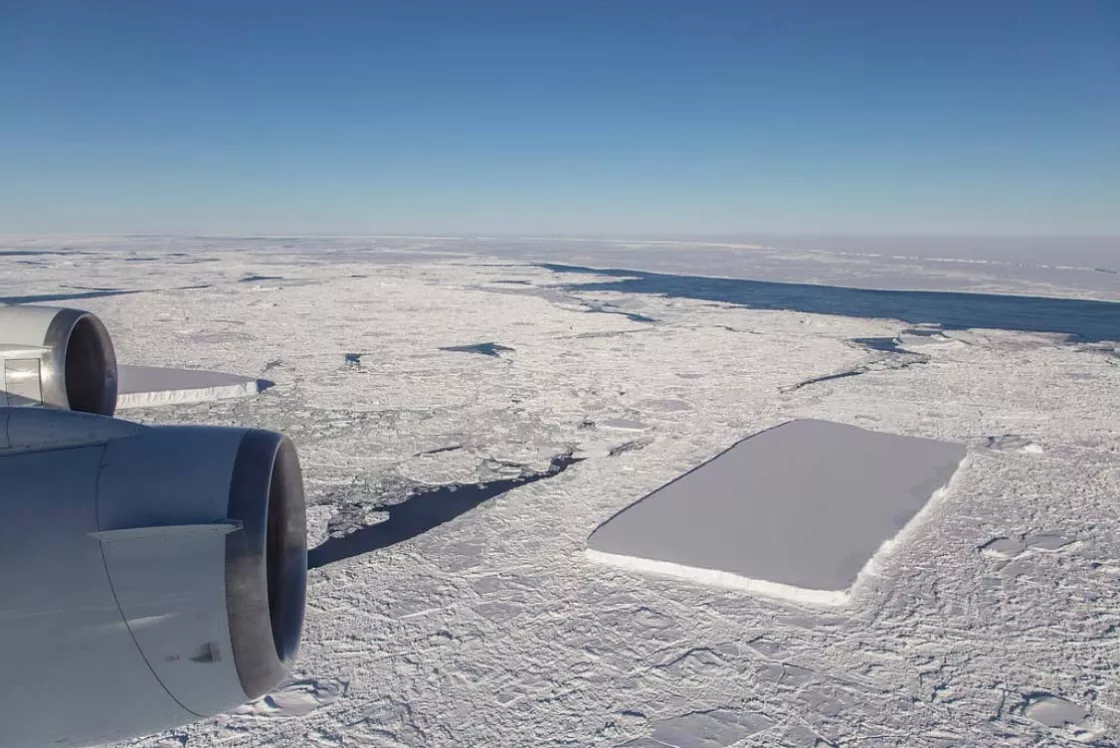Ice shelves are thick slabs of ice that cling to cold-region coastlines. Although some ice shelves form through the accumulation of sea ice, the world’s largest ice shelves are fed by glaciers. When a glacier reaches the coast, the ice floats on near-freezing water and continues to spread outward.
Two kinds of events have been observed in ice shelves: iceberg calving and disintegration. Calving is a natural phenomenon, but disintegration is a new phenomenon, likely linked to climate change.
Calving: a natural process
The breaking off of icebergs, known as calving, is a normal part of the life of a glacier-fed ice shelf, even when the icebergs calved are massive. When a large iceberg calves off an ice shelf in a stable glacier-fed ice shelf system, the lost ice is replaced over the course of years to decades by continuing outflow. Only when the pace of glacier calving accelerates significantly over an extended period of time is the system considered to be in retreat.
Disintegration: new and disconcerting
In contrast to iceberg-calving events, disintegration is a newly observed phenomenon, only documented since the 1990s. Since then, studies have indicated that ice shelf disintegration results from warming conditions, which stress ice shelves in multiple ways.
One way that warmer conditions destabilize ice shelves is through higher air temperatures. Ice shelves are typically blanketed by snow, which contributes to the ice shelf’s mass over time. Warmer summer air temperatures cause snow cover to melt, changing the permeable snow surface into an impermeable ice surface—the same way a few warm days can turn snow in a sidewalk gutter into ice. In subsequent summers, meltwater on the ice shelf does not sink into the snow. Instead, it pools on the shelf surface. The water can find its way into pre existing cracks in the ice and, because water is denser than ice, slice deeper into the ice shelf. Eventually, the water can cut completely through the ice.
Another way that warming conditions destabilize ice shelves is through ocean warming. As warm ocean water slithers under the ice shelf, it melts the ice from below, thinning the ice shelf.
Warmer ocean water can also contribute to sea ice decline. As sea ice diminishes, wave action in the region increases. Now unfettered by sea ice, waves can flex and bend the shelf, stressing it further.
One or more of these pressures can lead to ice shelf disintegration. Once disintegration starts, it may progress quickly. Some ice shelves change so dramatically that the changes are visible from space in a matter or days or even hours.
Ice shelf disintegration not only has the potential to happen quickly, it also has the potential to destabilize the glacier(s) feeding the ice shelf.
In a glacier-fed ice shelf system, the point where glacier ice begins to float is known as the grounding line, and it is an important part of ice shelf stability. If an ice shelf retreats past the grounding line, the tributary glacier(s) begin flowing faster. This process can eventually contribute to sea level rise as glaciers slide from land into the water. For an example of how this process develops, read about the aftermath of the Larsen B Ice Shelf disintegration.
In short, glacier calving is a normal, natural process. Ice shelf disintegration is not.

